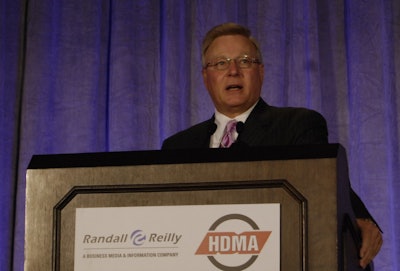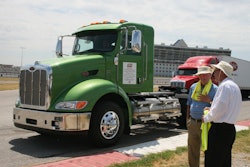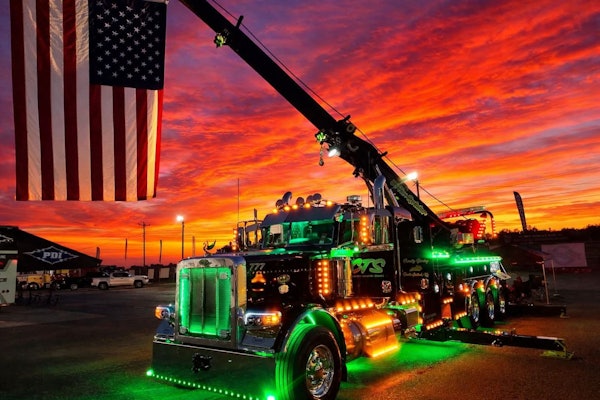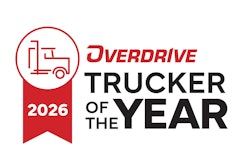 Navistar Senior VP Jim Hebe spoke of the increasing power and importance of carrier-based operations Thursday at the Commercial Vehicle Outlook Conference. Hebe also spoke some of coming changes in engine technology, including the rise of natural gas engines and smaller truck models.
Navistar Senior VP Jim Hebe spoke of the increasing power and importance of carrier-based operations Thursday at the Commercial Vehicle Outlook Conference. Hebe also spoke some of coming changes in engine technology, including the rise of natural gas engines and smaller truck models.The trucking industry is reshaping itself within rapid market changes, Navistar’s sales and marketing vice president James Hebe said Thursday, Aug. 25.
“The conditions since 2006 have changed our industry forever,” Hebe told trucking executives gathered for the Commercial Vehicle Outlook Conference prior to the start of the Great American Trucking Show in Dallas. “The next 10 years will change the industry faster than any other time in the history of heavy-duty trucking.”
Challenges the industry must respond to include carrier consolidation, longer-running trucks, a decrease in demand for Class 8 trucks, increased production of medium-duty trucks, increased intermodal freight, the rise of engines powered by natural gas in lieu of diesel and more regulation of diesel emissions, Hebe forecast.
Owner-operators will face more competition from those conditions, as well as from integrated truck technology and hours of service rules, he said. “Technology is replacing experience and expertise.”
“Since 2006, the number of trucks required to move freight throughout North America has decreased on a ton per mile basis,” Hebe said, noting that 165,000 to 180,000 Class 8 trucks will be needed, versus former volumes averaging 350,000 per year. “We won’t return to those old volumes.”

Both compressed natural gas and liquefied natural gas engines will be used increasingly in medium-sized trucks used, as example, for state utility services, Hebe said. “Natural gas is becoming a reality.”
As truck technology becomes more sophisticated, dealers will focus on more integrated parts and services for repairs. “We have to have service technology in the dealerships,” he noted. “Look for a lot of investment in all dealers and manufacturers.”
Hebe, a trucking industry veteran who has worked for both Freightliner and Navistar in a career spanning 36 years, recommended that fleets, truck makers, dealers and suppliers resist increasing government regulations, heed increasing competition from freight moved by rail and develop a business model fit to North America’s regulatory and transportation systems over relying on a European model.
Referring to the Obama administration’s policies, he urged industry members to push for fewer environmental regulations “between now and 2014.”
Despite challenges, Hebe remains optimistic. “We will see vast changes in North America” in the next several years,” he said, “But we’ve only begun to see the excitement that can take place in the heavy truck business.”










